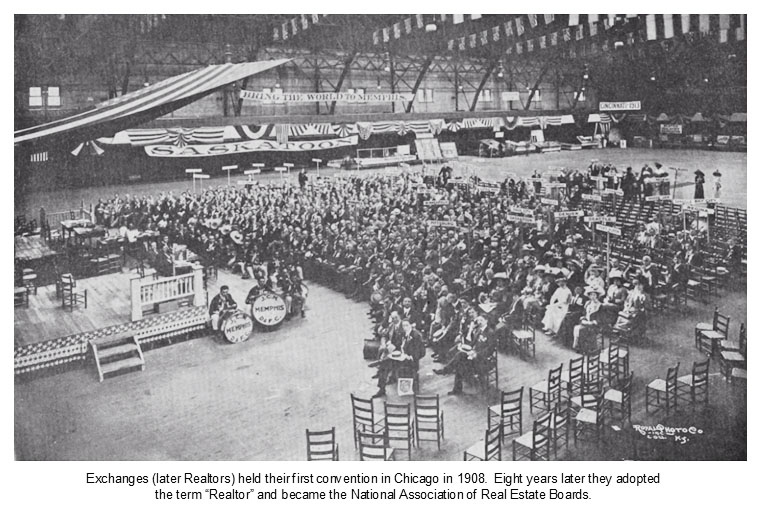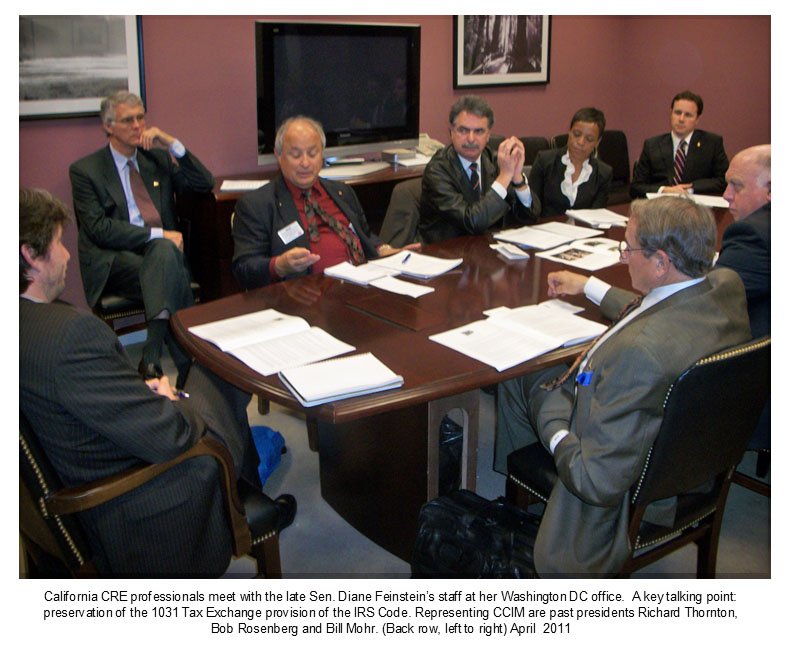Everyone Loves A Convention: Part 1
Businesspeople love their conventions, and CCIMs are no exception. A break in routine, nice dinners, sightseeing, comradery and networking with rarely seen friends from around the country—all components of the most popular perk for a chapter or national leader. And if an organization is picking up the tab, all the better!
The highlight of the annual travel scene is the national convention, which is often called a “conference” so that it doesn’t sound like too much fun.

In the early days, conferences were held in conjunction with meetings of the National Association of Realtors (NAR). These fall meetings were massive and extravagant. In the 1980s and 1990s, as many as 25,000 to 30,000 Realtors and vendors would converge on a major city, attend their seminars, briefings and meetings – and party. The conventions were so large that only a few cities could accommodate them. Anaheim and Orlando were probably the most popular as families would join the conventioneers when the “work” was finished. Las Vegas, San Francisco, Dalles, Honolulu and New York City were all in the rotation. Other cities didn’t have enough hotel rooms.
NAR’s institutes, societies and councils – now there are seven including CCIM—met with NAR, but usually had their own headquarters hotel. There they would conduct their own seminars and committee meetings, converging with the mother association for the Keynote address and Gala Inauguration dinner.

In the spring, the NAR family greeted the cherry blossoms in Washington DC for more meetings and visits to Capitol Hill to lobby Congress. As one of the largest trade organizations in the country, currently boasting 1.5 million members, NAR has political clout reviled only by the NRA and AARP. NAR’s Political Action Committee (RPAC) is also one of the country’s wealthiest. In the 2020 election cycle, RPAC spent nearly $49-million to support candidates for federal office. A staff of experienced NAR lobbyists would brief attendees on current legislative issues, review talking points from the playbook and send people off to meet with Representatives from their home districts, and Senators from their home states. If the lawmaker considered NAR a friend, they would personally accommodate a half-hour briefing schedule. If not, a staff member listened to the briefing.
NAR’s power in Washington DC, in state capitols and in the courts has always been dependent on its numbers—members and RPAC funds. No wonder it has fought over the years to keep its family together. While political agendas are usually in alignment, business interests have sometimes conflicted.
The Conventions Split
Prior to 2003, CCIM conventions, like those of the other NAR institutes, societies and counsels, were held in conjunction with the NAR Midyear and Fall conventions. But as the children became more independent and self-sufficient, they decided to go it on their own. One motivation was economics. A convention with 3,500 attendees could meet in dozens of cities across the county, where a convention of 25,000 or more could only meet in a half dozen, much more expensive venues. Then there was the politics. NAR’s children associations quickly learned that conventions could prove to be a valuable perk for their leadership. Bringing a convention to a sitting president’s hometown was a feather in their cap and an opportunity to build their local reputation. Conventions could boost the local economy with a considerable influx of hotel and restaurant spending, bring the city’s mayor in to welcome attendees, even pay their kid’s high school band to entertain. It was clearly a Win, Win, Win. CCIM’s convention planner carefully scoped out the association’s succession plan years in advance to assure that at least one of the two major national meetings was held at the sitting president’s hometown.
Given little choice, NAR acquiesced. It continued to heavily market its meetings to its children associations, offering famous keynote speakers and specialized seminars. And, to this day, it encourages its children to market and attend its annual Capitol Hill visitation, and of course, support its RPAC fundraising.
NAR conventions are held in November, CCIM Conferences are in October. This way, members can attend both. In 2011, CCIM joined with IREM in an experiment to determine if their joint interests supported consolidated meetings. Apparently they didn’t, especially from the perspective of the sponsors who make the meetings financially viable. So in 2012, CCIM decided to once again go it alone.
In future blogs we’ll see how conventions get personal and how NorCal CCIM made them special when they came to town. Watch this space!
By Terry Shores
March, 2024
Ready to Contribute To The Legacy We're Building?
GET STARTED
If you have an idea, an observation, a photo -– anything that would contribute to the project, contact us today!
legacy articles
contact
our chapter
about
home
ccim national
mailing address
NorCal CCIM
2872 Ygnacio Valley Road #10
Walnut Creek, CA 94598